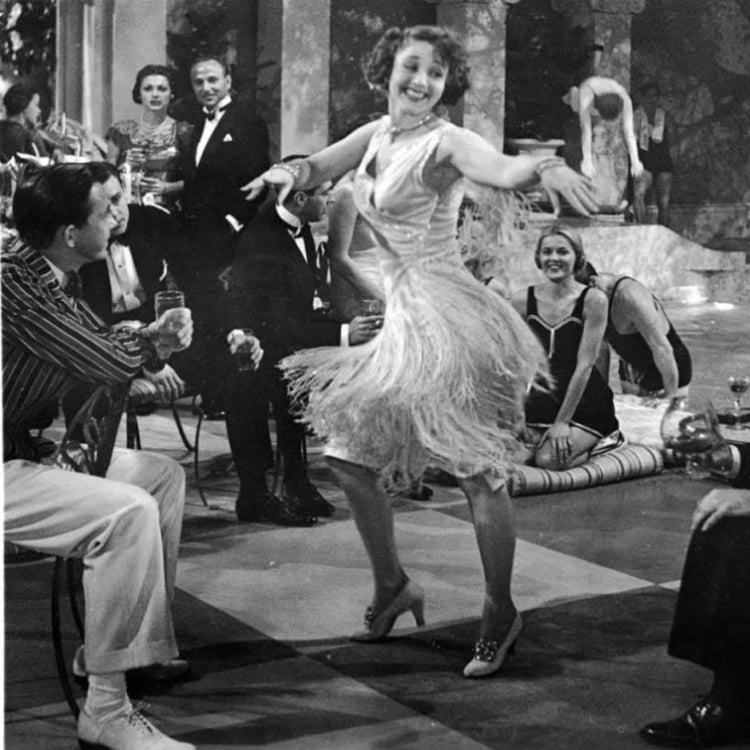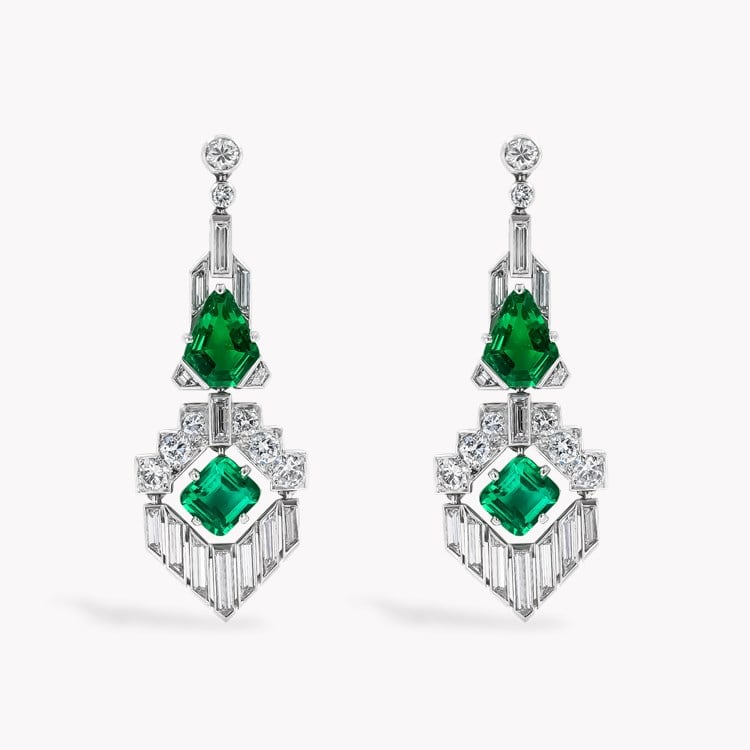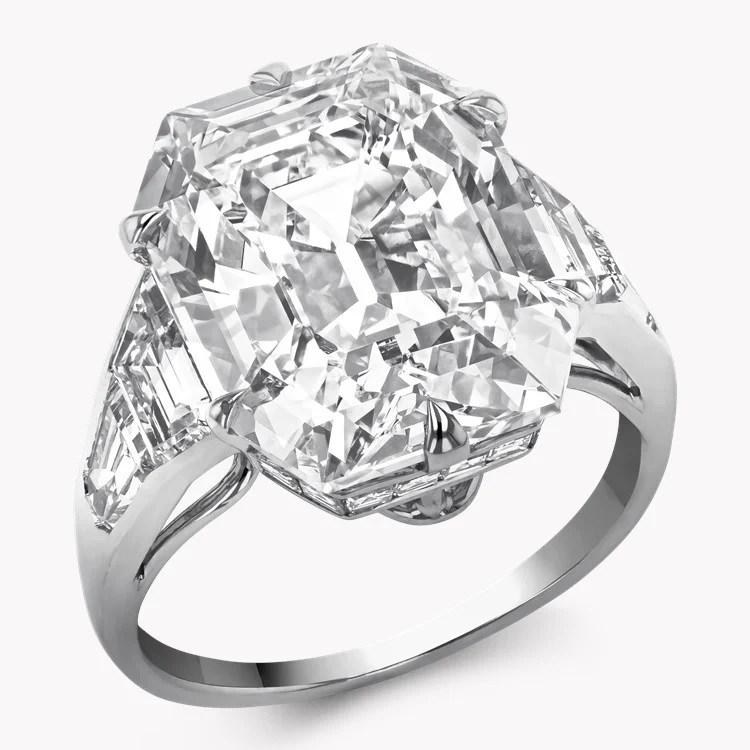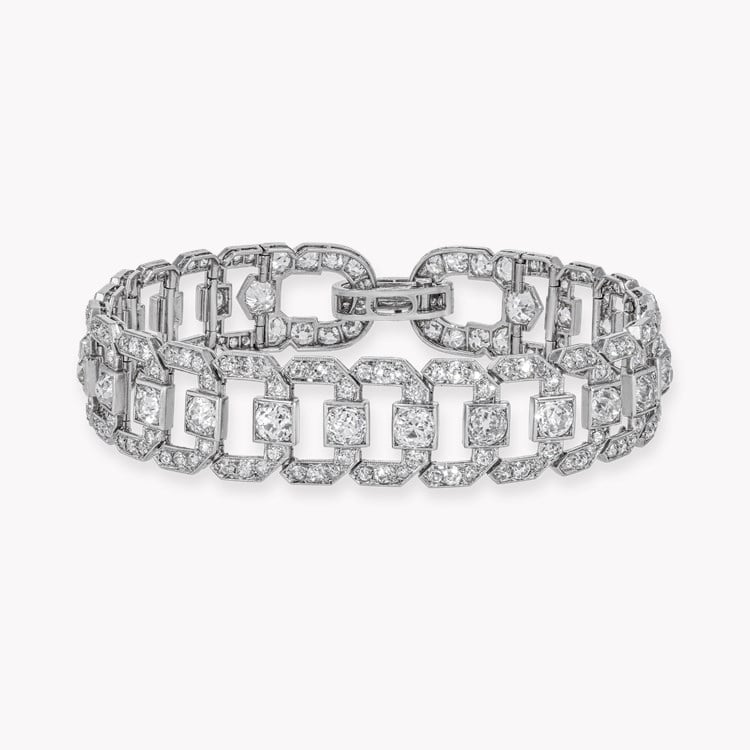The Art Deco Period
The Art Deco era, which lasted from 1911 to 1940, is renowned for producing some of the most iconic jewellery designs of the 20th century. A style of the visual arts, it significantly impacted architecture and other decorative arts by combining bold geometric forms with vibrant colours.
Art Deco jewellery, with its diverse influences from technology, skyscrapers, ocean liners, and archaeological discoveries, is a testament to its eclectic nature. Originating in France, its appeal soon reached the rest of Europe and America. Art Deco designs focused on geometric shapes, clean lines, and symmetry. The style was immensely popular, with jewellery predominantly featuring white metals and diamonds, although accent colours such as sapphire, emerald, and ruby also appeared.

Taking its name from the ‘Exposition Internationale des Arts Décoratifs et Industriels’, which took place in Paris in 1925, Art Deco was a daring international decorative arts movement that took the world by storm between 1920 and 1940. The Art Deco style relied on bold lines, geometric shapes, and vibrant colours. Early twentieth-century painting styles such as Cubism and the building of the iconic Chrysler Building in New York in 1928 were both major influences in the development of the movement.
The Art Deco era witnessed a significant transformation in women’s fashion, with Coco Chanel leading the way. Her elegant yet practical designs necessitated a rethinking of jewellery, which now had to flatter and be more streamlined to match the new silhouette. Geometric patterns were all the rage. The most popular engagement ring stone cuts were emerald, Asscher, and baguette, with diamonds, rubies, sapphires, and emeralds set in platinum. The vibrant colours of these stones perfectly reflected the vibrant times, and the prosperous economy of the era allowed for the use of high-quality gems.

A new fashion trend that emerged was hair ornamentation. Women started cutting their hair shorter, making it more challenging to create elaborate styles with their own hair, allowing jewellers to jump in and fill the gap, with tiaras, clips, and combs becoming all the rage. Earrings also changed significantly; as hair became shorter, earrings became longer. Pendant necklaces and sautoirs followed suit and increased in length, creating a new, relaxed, layered aesthetic. Tassels of pearls and beads accompanied carved gemstones, rings became larger and featured emerald cut or cabochon cut stones, whilst bracelets widened and featured geometric patterns.

Theatre productions with sets designed by artists Matisse and Picasso and ballet performances, such as ‘Ballet Russe’, introduced audiences to vibrant colours, oriental style and Futurism. The discovery of King Tutankhamun’s tomb in 1922 ignited the population’s appetite for Egyptianism. Motifs, including the eye of Horus, scarabs and lotus blossoms, were highly desirable and featured on brooches and pins. Architectural Japanese style motifs of temples and rising suns were depicted perfectly in bold lines with materials such as lapis and carnelian.

The goldsmiths at the time belonged to one of two schools of thought:
Bijoutiers-artistes prioritised design over materials and were heavily influenced by sculpture and art. Their jewels often had a futuristic edge and used techniques such as colour lacquering, which was new to the jewellery craft.
Bijoutiers-joailliers were more focused on the gems and materials used; specially cut diamonds in unusual shapes, such as trapeze and triangles, were used to create geometric patterns and set with unusual materials such as rock crystal.
The jewels of the Art Deco era, with their timeless appeal, are as relevant today as they were 100 years ago. They reflect our contemporary desire for wearable, versatile, impactful, and evocative jewellery, bridging the gap between the past and the present.
Art Deco Jewellery at Pragnell
At Pragnell, we take pride in our heritage as a sixth-generation family jeweller. We offer a thoughtfully curated collection of unique and captivating vintage Art Deco jewellery from this remarkable era.
Our range of Art Deco Gatsby jewellery has been handpicked by a member of the Pragnell family from various locations around the world. Our selection includes elegant Art Deco earrings, brooches, pendants, and dazzling diamond-set plaque bracelets, complemented by captivating jadeite and rock crystal earrings.
Pieces bearing the signatures of renowned makers are highly sought after, and we are delighted to present exceptional creations from iconic names such as Cartier, Tiffany & Co, and Rene Boivin. Many of these treasures come with original boxes, further enhancing their prestige and desirability.
Antique CLP Page
-(1).jpg)
-(1).jpg)